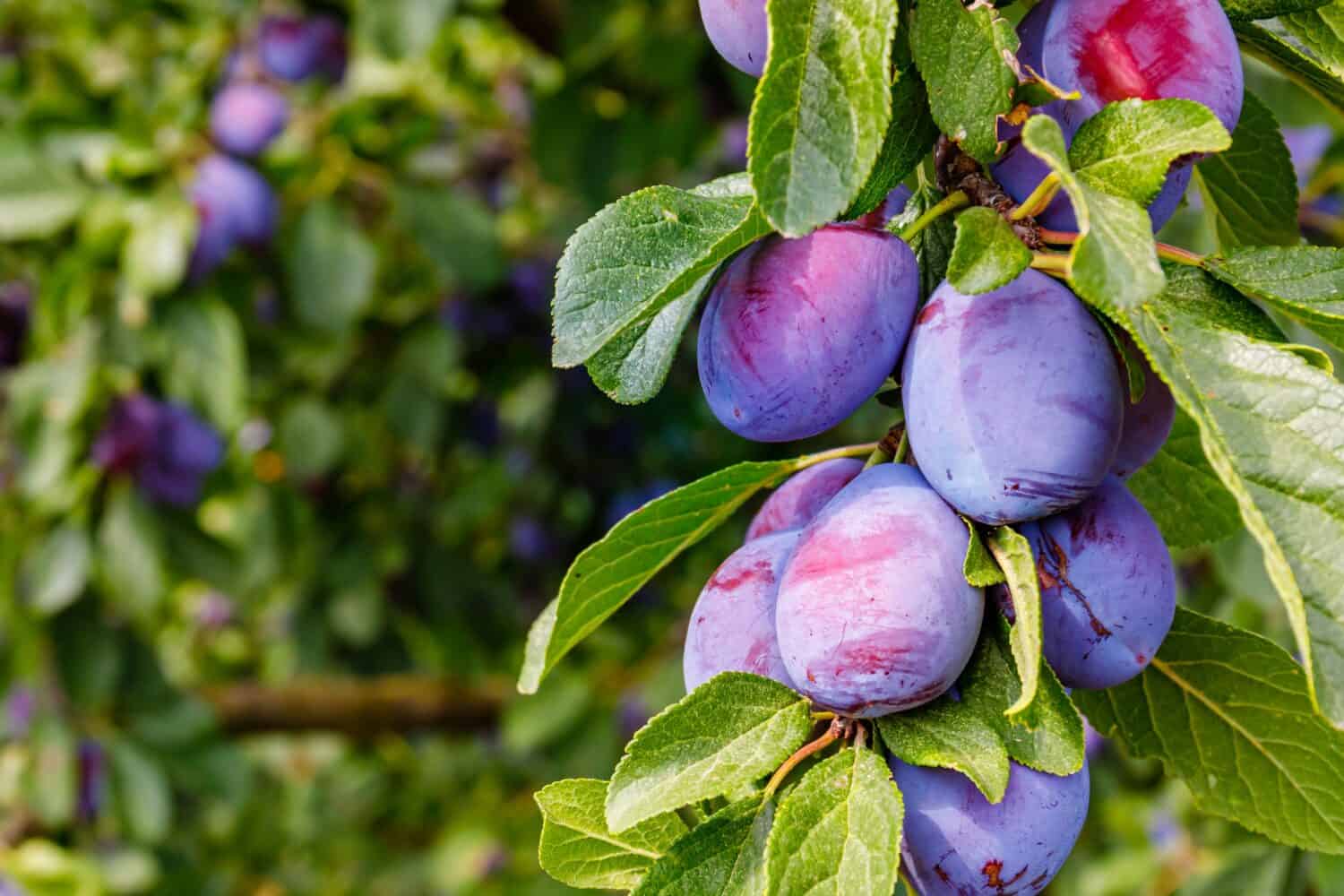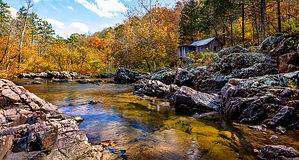Growing fruit trees is a rewarding experience. They offer beautiful shaded areas to the backyard or garden, and their flowers attract loads of pollinators. However, the best part is that they provide a generous harvest at a fraction of the cost of the grocery store! But sometimes fruit lovers don’t plant trees because their garden doesn’t receive a lot of sunlight. The good news is that many fruit trees grow and thrive in shade! So, you can still get that killer harvest. Let’s take a look at eight of these below.
Understanding Shade vs. Sun
Before putting anything into the ground (or pot), it is vital to understand the difference between sun and shade requirements and all the nuances in between. We’ve broken that down below so you have a handy guide.
Full Sun
When a plant requires full direct sunlight exposure, it needs six or more hours daily. But don’t get stuck on the six-hour mark. That is just a minimum requirement. Some plants need eight to ten hours daily. Additionally, growing plants indoors using a grow light means even more hours. So, be mindful of the planting location and what each particular species needs.
Partial Sun
Partial sunlight is just like it sounds… a little less than full sun. Plants that thrive in partial sun need direct exposure for three to six hours daily. A good rule of thumb for these species is to do a deeper dive to learn if they can tolerate harsher afternoon sun.
Dappled Shade
This lovely term refers to the type of shade that a plant under a tree might get. Yes, it still receives some direct sun exposure. But that sunlight gets filtered through the leaves of the tree above it, reducing the harshness.
Partial Shade
The term partial shade is often used interchangeably with partial sun. However, they are slightly different. It all depends on who you ask. Roughly, partial shade refers to four hours or less of direct sun exposure daily.
Full Shade
Some plants require full shade to survive, and others can tolerate short periods of full shade. This term refers to areas that receive less than three hours of shade daily. It also overlaps somewhat with partial shade.
What Fruit Trees Grow and Thrive in Shade?
Now that you know what sunlight requirements mean, let’s take a look at which fruit trees grow and thrive in shade.
Plum Trees
While plum trees (Prunus domestica) do best in full sun, they will tolerate partial shade in zones 4 to 9. That allows you the chance to add some fruit trees, even if you are short on sunny spots. If possible, find a place in your garden that receives quality sun in the morning and shade in the afternoon. That environment is best for this lovely fruit tree.
Plums are a sweet fruit that can be used in many different applications. Consider turning it into jam or jelly for a breakfast treat. They hold up well to roasting and grilling. And you can even turn them into a delightful drink.
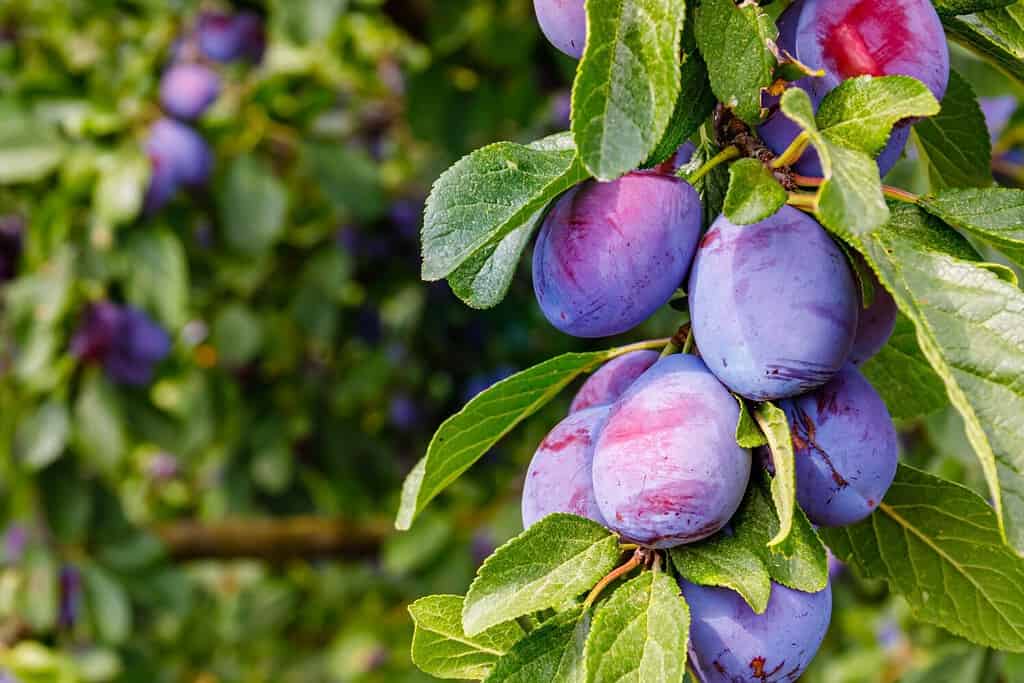
Plum trees survive in environments with partial shade.
©nnattalli/Shutterstock.com
Loquat Trees
Not many people in the United States have heard of loquat fruit. However, this small orange stonefruit is popular in its native China. Loquat trees (Eriobotrya japonica) will grow well in much of the U.S., so it is worth considering for your garden. Plant the loquat trees in a spot that receives partial shade daily if you live in USDA Hardiness Zones 8 to 11.
It is difficult to find loquats in the store because they are quite delicate. However, the possibilities are endless if you decide to grow a tree yourself. They are divine in relishes, sauces, jams, and by themselves. Alternatively, add them to baked dishes in place of peaches or apricots.
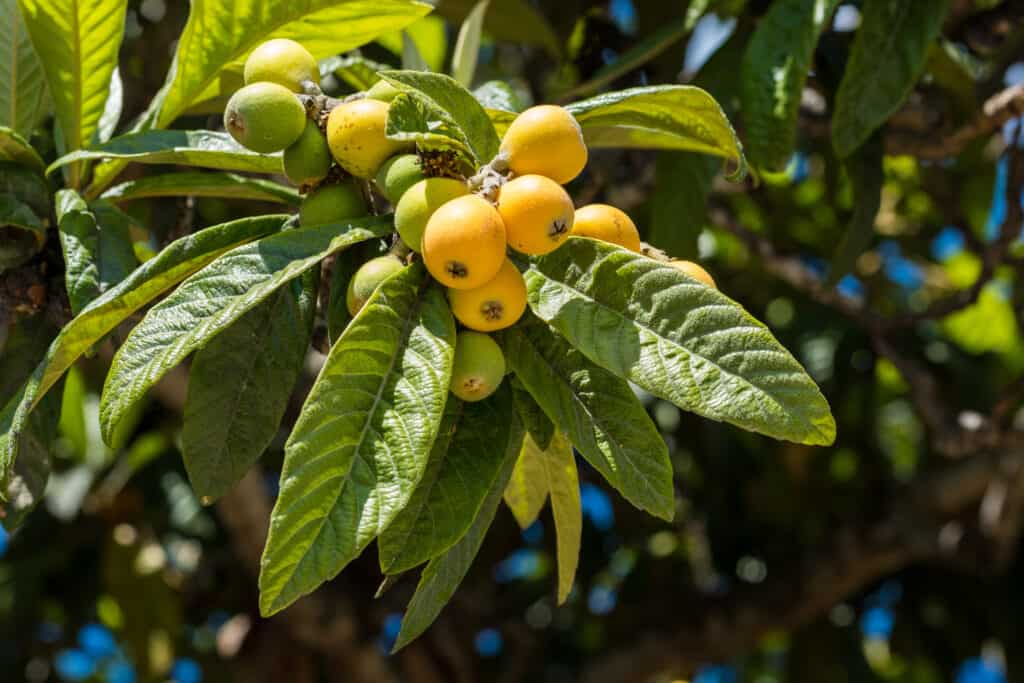
Since loquat is a stonefruit, you can use it in place of peaches or nectarines.
©iStock.com/kornyeyeva
Quince Trees
Quince trees (Cydonia oblonga) are native to Turkey, Iran, and Greece. This flavorful fruit is most commonly found in paste form in the United States. They can tolerate partial shade and grow well in USDA Hardiness Zones 5 to 8. Their showy flowers attract plenty of butterflies, so get your binoculars handy!
Many people find the flavor of quince a little astringent. However, in warmer climates, they grow sweet. Make preserves, jellies, or baked goods like pies with your new-found fruit!

Quince fruit makes delicious jam and spreads.
©darksoul72/Shutterstock.com
Mulberry Trees
Almost all berries grow on shrubs. However, the mulberry is an exception. Mulberry trees (Morus rubra) can reach up to fifty feet high! This North American native thrives in zones 4 to 8. It prefers full sun to partial shade, so it is the perfect addition to any shade garden.
Use mulberries the same way you would any other berry. Make delicious baked goods, jam, jelly, or syrups. You can even turn them into tea or ice cream! The sky truly is the limit with this underappreciated berry.
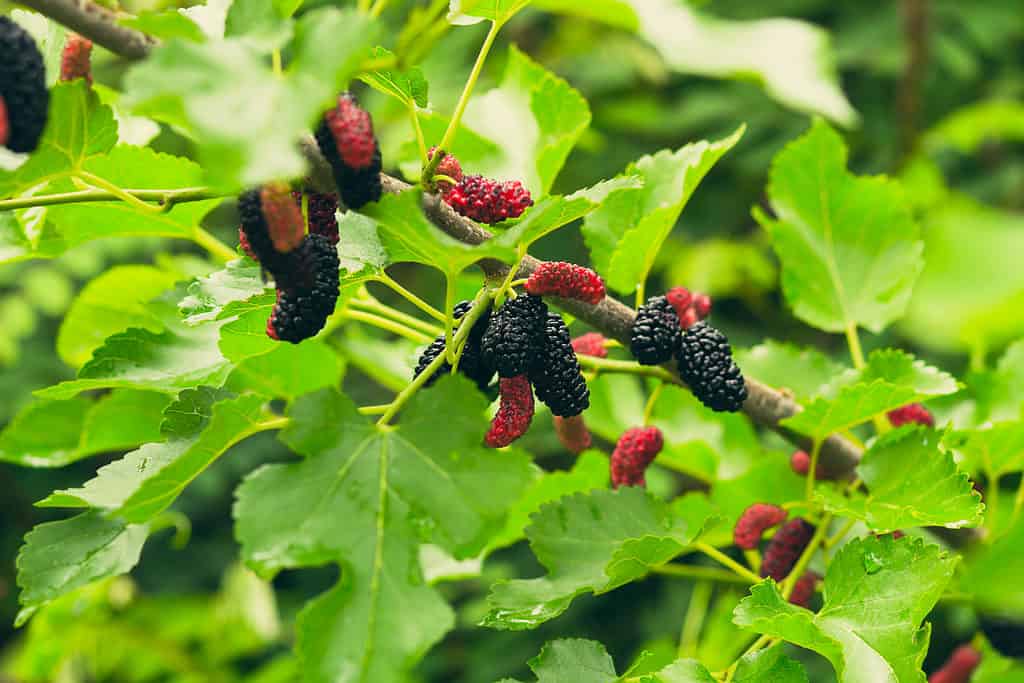
Unlike many of its relatives, mulberries grow on trees instead of shrubs!
©iStock.com/c12
Pomegranate Tree
This tree is native to India and Iran, so you may be surprised to learn that it loves growing in the United States. Pomegranate trees (Punica granatum) grow best in zones 8 to 12. They prefer full sun but can tolerate partial shade without drastically reducing the harvest.
Pomegranates are fun to eat on their own. They also hold up well in both sweet and savory applications. Consider tossing some seeds in a salad, making a dressing, or adding them to salsas.
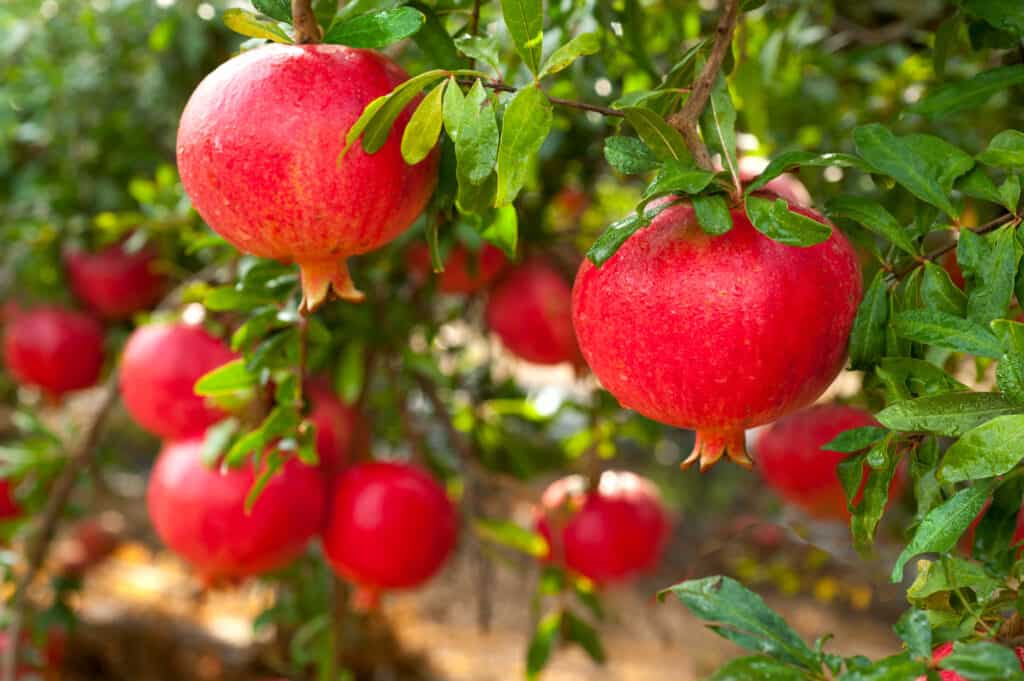
Pomegranate trees prefer full sun but can tolerate partial shade without drastically reducing the harvest.
©grafnata/Shutterstock.com
Pear Trees
Another tree to consider planting is the pear tree (Pyrus communis). This delicious fruit is native to parts of Asia and Europe but also grows well in USDA Hardiness Zones 4 to 8. Thankfully, pear trees will also survive in locations that only receive partial shade. The harvest may decrease slightly, but it won’t stop entirely. If you want to plant one of these amazing trees, try to find a spot that gets shade in the morning and full sun in the afternoon.
Pears are fantastic raw, juiced, added to salads, or grilled. Consider topping them with blue cheese for a unique flavor combination. They also work well in many baked goods.
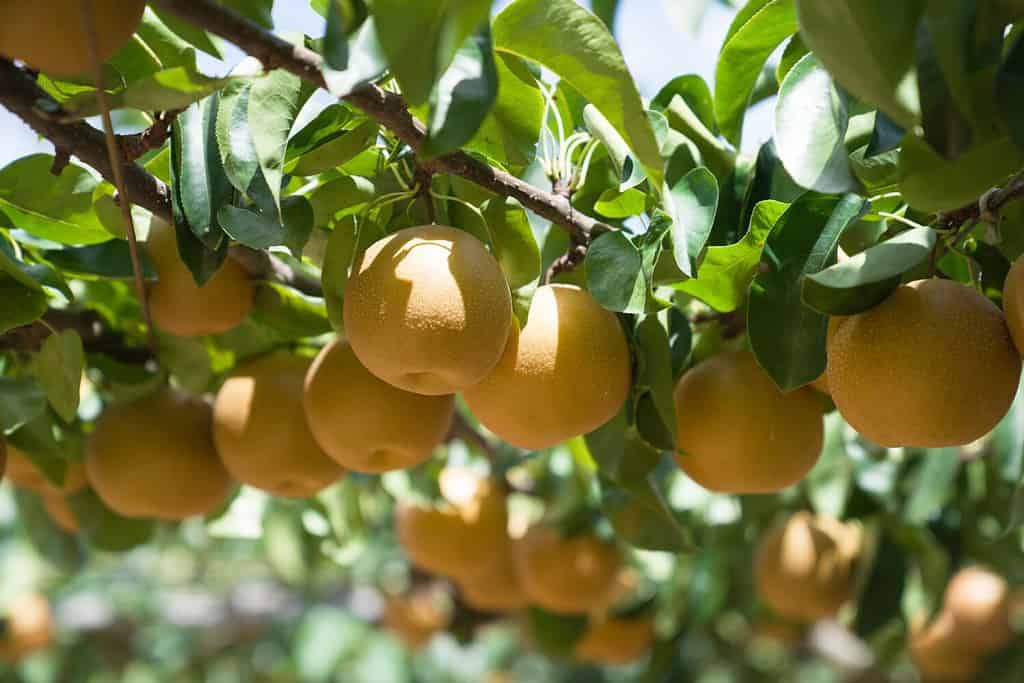
Pear trees will also survive in locations that only receive partial shade.
©Nikox2/Shutterstock.com
Fig Trees
While fig trees (Ficus carica) are native to Asia and parts of Europe, they grow surprisingly well in warmer U.S. climates. Consider adding one of these stunning fruit trees to your garden if you live in zones 6 to 9. Most fig tree varieties will tolerate partial shade. However, the fruit production may decrease slightly. So, as long as you are comfortable with that, plant away!
You can’t go wrong eating figs fresh. But there are other tasty ways to enjoy this fruit. Roast them, stuff them with goat cheese, or wrap them in prosciutto. They also make great preserves, james, and baked goods.
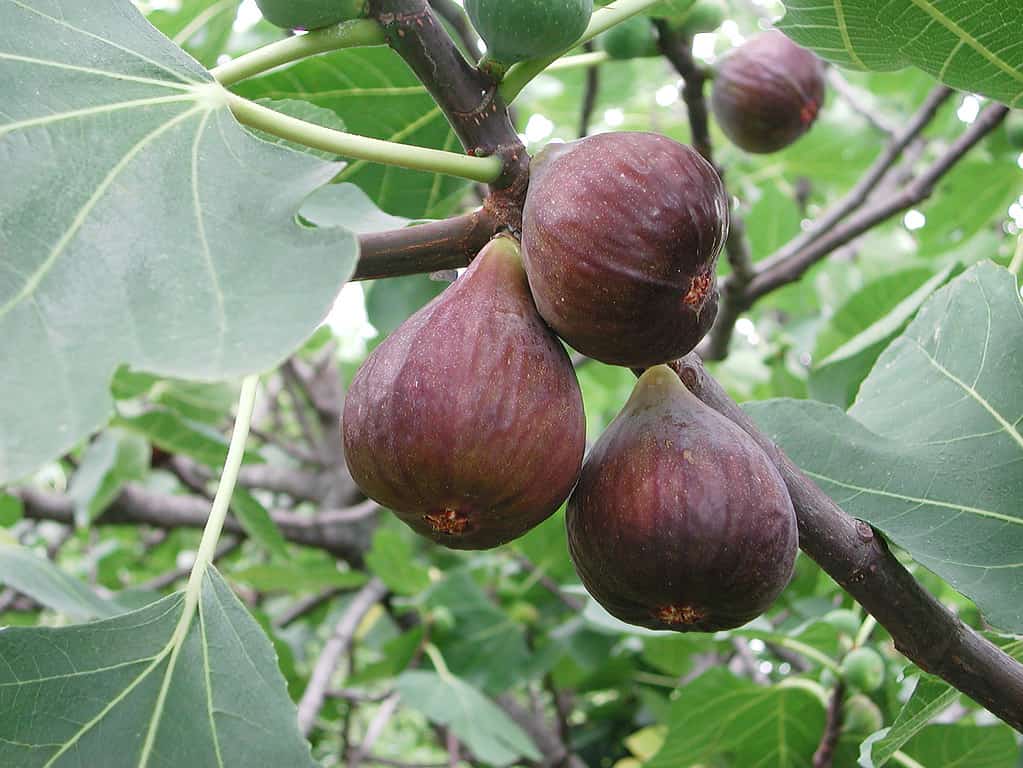
Fig trees grow well in the United States and produce delicious fruit that is ideal for numerous culinary applications.
©simona pavan/Shutterstock.com
Pawpaw Trees
This unique tree grows wild throughout much of the United States. And when it does, it tends to grow under larger canopies. So it will do well in partial shade in your zone 5 to 9 garden as well! Pawpaw trees (Asimina triloba) have a fun name. But they also have a storied history in the Americas and produce delicious fruit. The fruit is roughly six inches long and tastes almost like custard. However, that also means you have to try and beat the wildlife, which loves to feast on the sweet fruit.
Pawpaw fruit is ideally suited for baked goods like breads, pastries, and pies. It also makes tasty juice, smoothies, and jams.
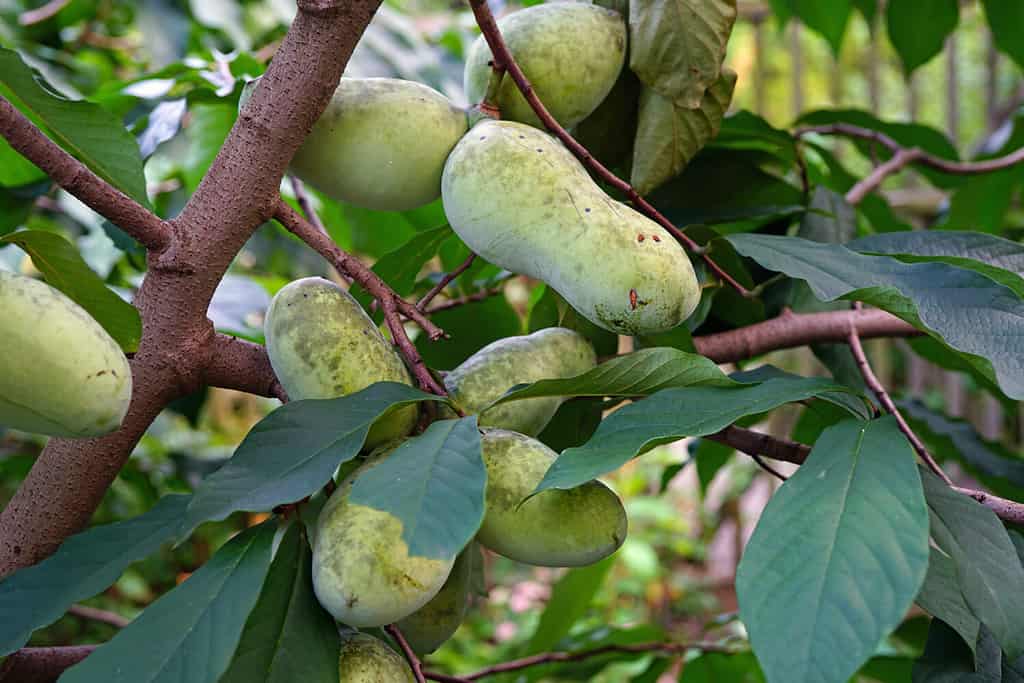
Pawpaw trees tend to grow under larger canopies.
©EQRoy/Shutterstock.com
Summary of 8 Fruit Trees That Grow and Thrive in Shade
| Number | Tree |
|---|---|
| 1 | Plum Trees |
| 2 | Loquat Trees |
| 3 | Quince Trees |
| 4 | Mulberry Trees |
| 5 | Pomegranate Trees |
| 6 | Pear Trees |
| 7 | Fig Trees |
| 8 | Pawpaw Trees |
Thank you for reading! Have some feedback for us? Contact the AZ Animals editorial team.

